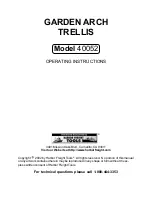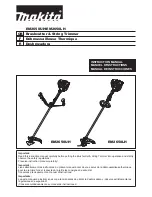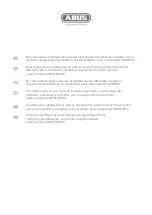
Form # 46620
Issue 11/06
33
OPERATION
HAYING TIPS
There is one certainty when making hay - a fast cure will maintain top quality. It is critical to have the cured hay
baled as quickly as possible, for two reasons:
1. Every day hay lies on the ground, 5% of the protein is lost.
2. The sooner the cut hay is off, the earlier the start for next growth.
Generally, leaving the windrow as wide and thin as possible makes for the quickest curing, however there are
other factors that affect curing time:
1. TOPSOIL
MOISTURE
When the ground is wetter than the hay, moisture from the soil is absorbed by the hay above it. Determine
topsoil moisture level before cutting. Use a moisture tester or estimate level:
Over 45% - WET - Soil will be muddy
25 - 45% - DAMP - Walking on soil leaves tracks
Under 25% - DRY - Soil will be dusty on top
When ground is wet due to irrigation, wait until soil moisture drops below 45%. When ground is wet due to
frequent rains, cut when weather allows and let the forage lie on wet ground until it dries to the moisture level
of the ground. At this point, the cut hay will dry no more until the ground under it dries, so consider moving the
windrow to drier ground.
On wet soil, the general rule of "wide and thin" does not apply. A narrower windrow will dry faster than hay left
flat on wet ground.
2. CLIMATE AND TOPOGRAPHY
a. Try to have as much hay cut as possible by midday, when drying conditions are best.
b. Fields sloping south get up to 100% more exposure to the sun's heat than do north sloping fields. If you
bale and chop, consider baling the south facing fields and chopping those facing north.
c. When relative humidity is high, the evaporation rate is low and hay dries slower. If there is no wind,
saturated air becomes trapped around the windrow, further hindering the drying process. Raking or
tedding will expose the hay to fresher, less saturated air. Cutting hay perpendicular to the direction of the
prevailing winds may also help.
3. WINDROW
CHARACTERISTICS
See "Operating Variables" in this section. Control the factors listed to produce a windrow with the following
characteristics:
a. High and fluffy for good air flow. The movement of air through the windrow is more important to the curing
process than direct sunlight.
b. Consistent formation, not bunchy. A uniform windrow permits an even flow of material into the baler,
chopper etc.
c. Even distribution, not piled in the middle or higher on one side. A windrow that is higher or heavier on one
side could cause stacks to lean, round bales to have one end smaller and loose, or small square bales to
be heavy on one side, causing handling and stacking problems.
d. Properly conditioned without excessive leaf damage.
4. RAKING AND TEDDING
Raking or tedding will speed up drying, however the benefits must be weighted against the additional leaf
losses which will result. When the ground beneath the down hay is dry, raking or tedding is probably not
worthwhile.
Big windrows on damp or wet ground should be turned over when they reach 40-50% moisture. Hay should
not be raked or tedded at less than 25% moisture, or excessive yield losses will result.
5. CHEMICAL DRYING AGENTS
Hay drying agents work by removing wax from legume surfaces, enabling water to escape and evaporate
faster. However, treated hay lying on wet ground will also absorb ground moisture faster.
Before deciding to use a drying agent, costs and benefits relative to your area should be carefully compared.
Always follow chemical manufacturer’s recommendations for safe handling and proper use.
Содержание 912
Страница 2: ......
















































